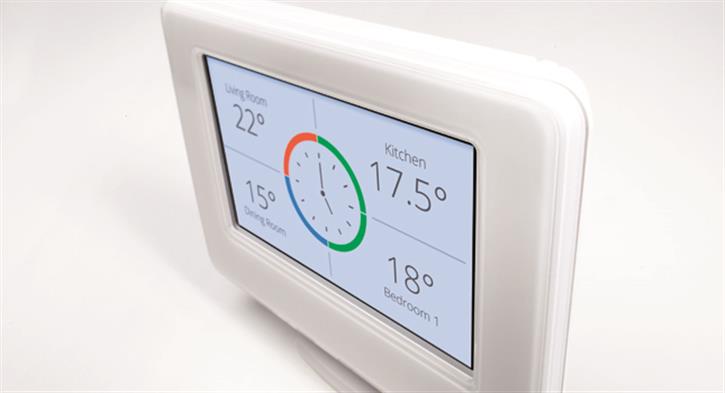

As the demand for smart homes continues to rise, it’s clear there is a lucrative market to capitalise on. However, the only way for installers to carve out their share is to remain one step ahead, explains Andy Mansfield.
No longer the neglected mechanical dial on the wall, heating controls are now seen as a desirable and aspirational piece of sophisticated technology in their own right.
The boom in ads on TV and in glossy lifestyle magazines for the latest smart controls has much to do with this – as does the growing amount of choice that is now available – and it’s not just the homeowner who is benefitting. With increased choice comes increased prospects for the installer to upsell. The key is in knowing which products are suitable for each application.
Smart controls are designed to be easily programmable, so that the homeowner can set their heating to suit their lifestyle – and not the other way around. So knowing the level of control needed is vital.
Competition in the marketplace is driving choice and resulting in lower prices. There is now a smart control to suit every price point – from the entry-level single zone wireless digital thermostat, to multi-zone controls with built-in wifi. So, for installers specifying heating controls, there really is a smart option for everyone.
Train to gain
The latest government figures show that 6 million homes are still without a thermostat, and 2.28 million people are currently affected by fuel poverty. Couple this with the fact that homeowners now see smart controls as a desirable piece of technology, and the heating controls industry is in the strongest position it has been in for a long time.
This presents an incredible business opportunity for installers, but being in the know and positioning yourself as a ‘smart installer’ requires training.
Good manufacturers offer training courses – both on and offline – on the full range of smart products available. The return gained from taking time out of a busy working schedule to invest in these courses is well worth the sacrifice. It’s not just about installing and setting up the controls, but also offering advice on how to use them, so for any installer looking to capitalise on the market, training needs to come first.
No more ‘fit and forget’
Becoming an installer of smart controls means moving away from the mind-set that once the controls are fitted, that’s the end of the job. The key to becoming a smart energy advisor is to add real value for customers and ensure you are the port-of-call for homeowners looking for connected products.
Smart controls require installers to offer homeowners a good level of consultancy and advice. The latest connected thermostats have more energy efficient functionalities than traditional thermostats, which allows the homeowner to programme their heating to suit their lifestyles for increased comfort.
It’s vital that the installer takes the time to educate the homeowner on what these are and how to use them so they can get the most out of their smart controls.
Carrying out all the relevant checks on the controls before you leave the property is also a must, to avoid costly call backs from a disappointed homeowner who believes they don’t work, simply because they haven’t been set up correctly.
Know your TPI from your IFTTT
With any new trend comes industry buzzwords. Knowing what the jargon means and being able to pass this information on to your customer in a way that helps upsell the lifestyle benefits, as well as the money and energy they can save, is a must.
Most smart controls use time proportional integral control (TPI) which provides additional comfort for the homeowner and can save even more on their heating bills.
Put simply, TPI makes sure the boiler fires for the shortest possible time to reach and maintain the desired temperature. Modern thermostats have in-built memories and basic calculation tools included in their software so they can learn about the room’s temperature and work out how long the boiler needs to fire for, whenever the temperature falls more than 1.5°c below the set point.
This ‘smart’ firing of the boiler means it is fired for just long enough to reach the set temperature and no longer – so no heat or energy is wasted, reducing demand and subsequently fuel bills.
IFTTT, or ‘if this, then that’, is a web tool that automates tasks between two apps or ‘channels’. It allows smart thermostats on the channel to access information from and react to smartphone or tablet services, including weather, geolocation and calendars.
After registering with IFTTT online, homeowners can programme certain tasks to take place automatically. Each formula follows the simple ‘if this, then that’ rule, enabling users to get the most out of their apps. For example:
An IFTTT channel builds on the level of control already built into the smart thermostats, giving homeowners the added advantage of automating changes based on their lifestyle, fuelling greater energy savings.
Andy Mansfield is marketing communications manager at Honeywell.
If you'd like to keep up-to-date with the latest developments in the heating and plumbing industry, why not subscribe to our weekly newsletters? Just click the button below and you can ensure all the latest industry news and new product information lands in your inbox every week.